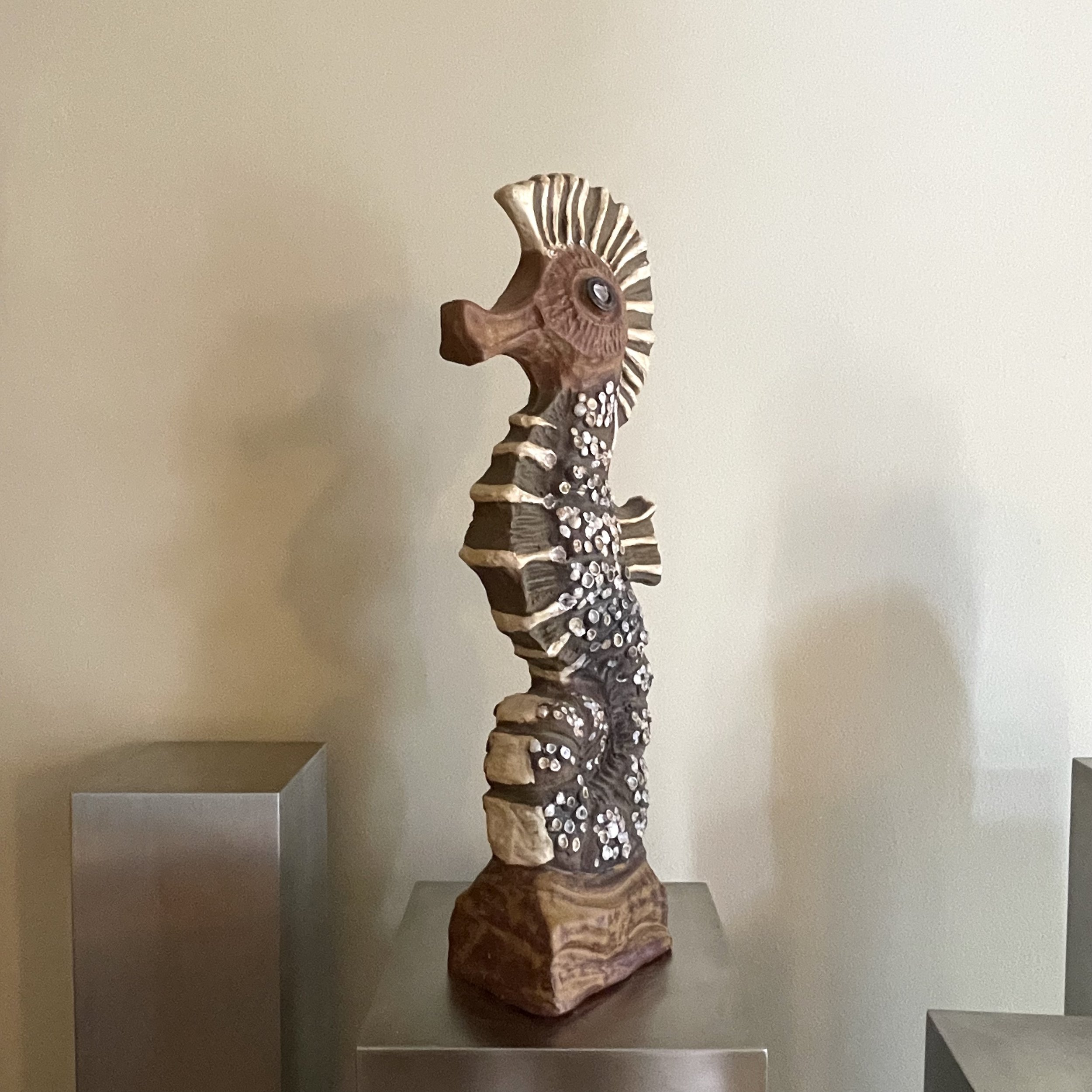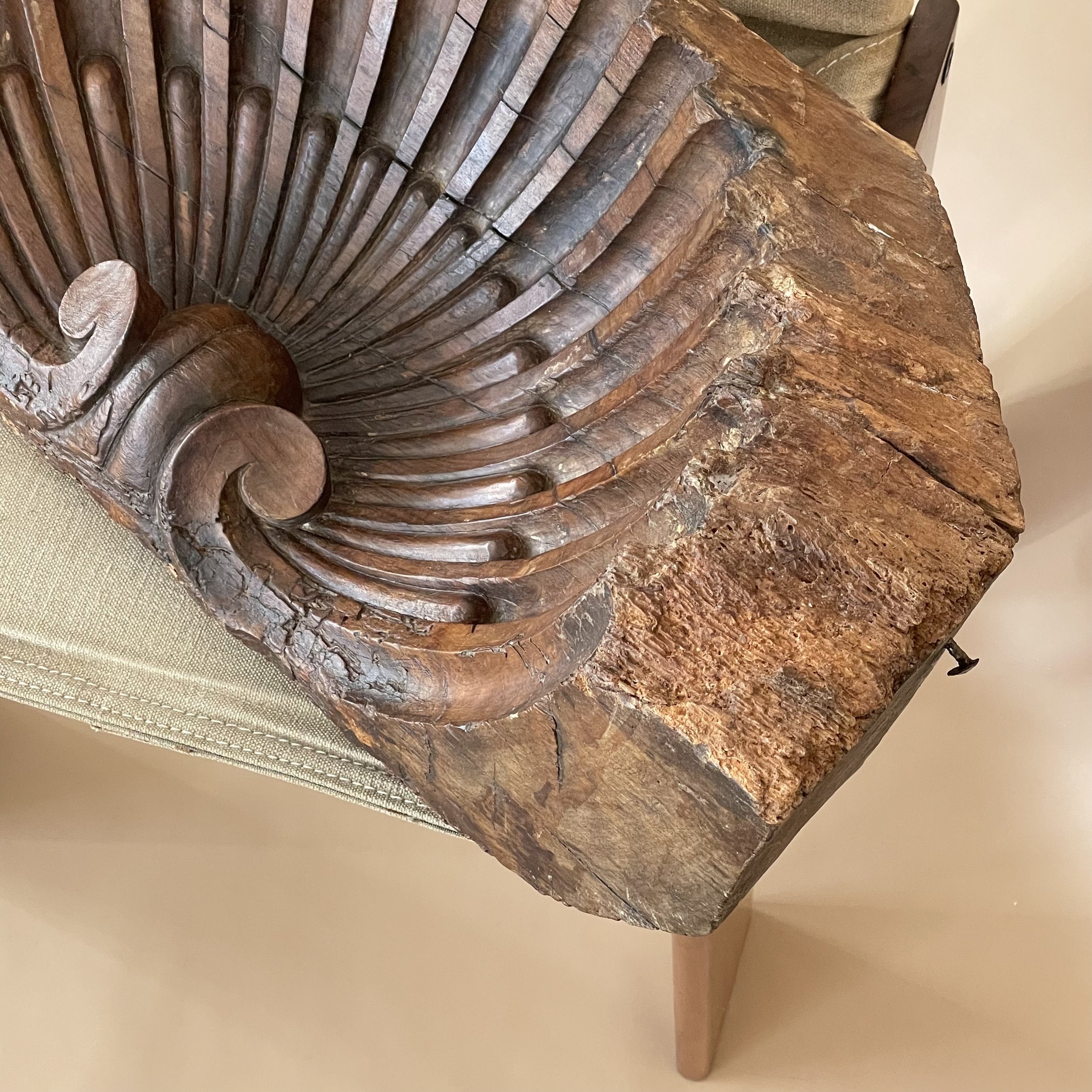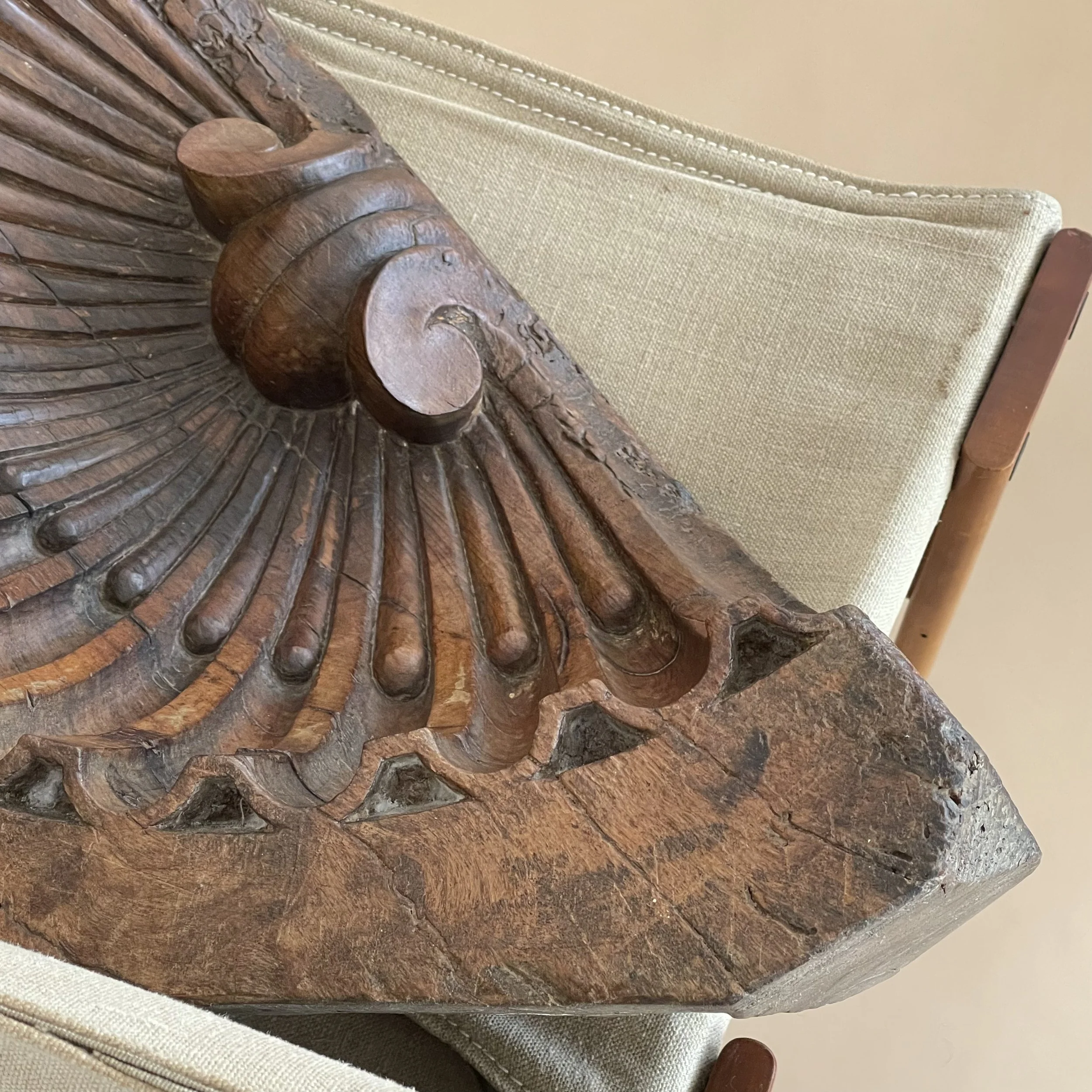Bannkorb, Maxime Delavet



Bannkorb, Maxime Delavet
Maxime Delavet
Bannkorb, 2025
Seigle, ronce, céramique
H 50 cm
Maxime Delavet
Bannkorb, 2025
Rye, bramble, ceramic
H 50 cm
Lorsque Maxime Delavet découvre le travail de recensement de ruches du monde entier dans l’ouvrage collectif d’APIAN, il s’intéresse en particulier à celles qui sont destinées à un usage de protection des ruchers : les bannkörbe. ces dernières fabriquées dans la région de Basse-Saxe en Allemagne se distinguent en particulier par les figures qu’elles arborent. Ces visages sculptés sont inspirées des grotesques et leur fonction est comparable à celle de l’épouvantail : elles protègent l’ensemble du rucher des intrusions malveillantes, aussi bien matérielles que spirituelles.
Ainsi, cet intérêt se traduit par la volonté d’en fabriquer à son tour. Il renoue avec le métier de son grand père, vannier et commence par collecter le seigle, la ronce, il fabrique ses visages en argile et patiemment il lie les pailles de seigle avec la ronce.
Cette nouvelle pièce s’inscrit dans une démarche qui pourrait tendre à un usage réel de la ruche, mais qui peut tout autant être envisagé comme une oeuvre d’artiste-artisan.
When Maxime Delavet came across the APIAN collection of beehives from around the world, he was particularly interested in those designed to protect the apiary: bannkörbe. Made in the Lower Saxony region of Germany, bannkörbe are particularly distinctive for the figures they feature. These sculpted faces are inspired by grotesques, and their function is comparable to that of a scarecrow: they protect the entire apiary from malevolent intrusions, both material and spiritual.
And so, this interest translates into a desire to make his own. He revived the craft of his grandfather, a basket-maker, and began by collecting rye and bramble, making clay faces and patiently binding rye straw with bramble.
This new piece is part of an approach that could be a real use for the beehive, but can also be seen as the work of an artist-craftsman.










